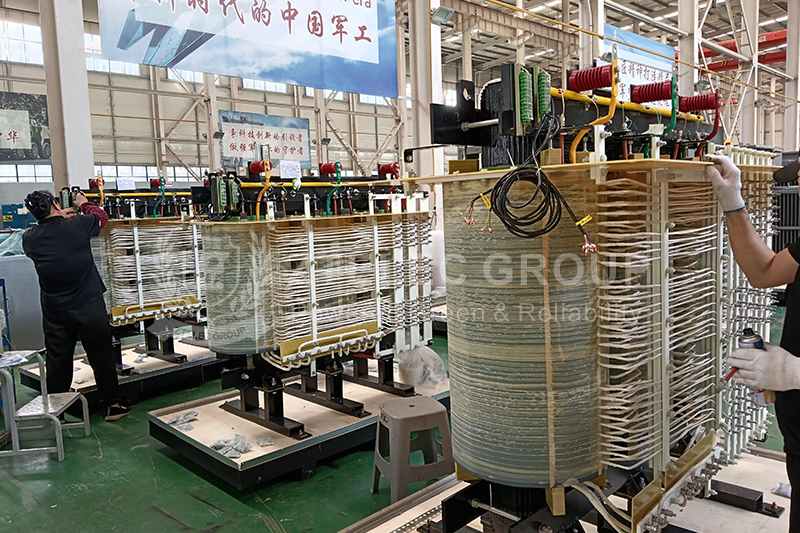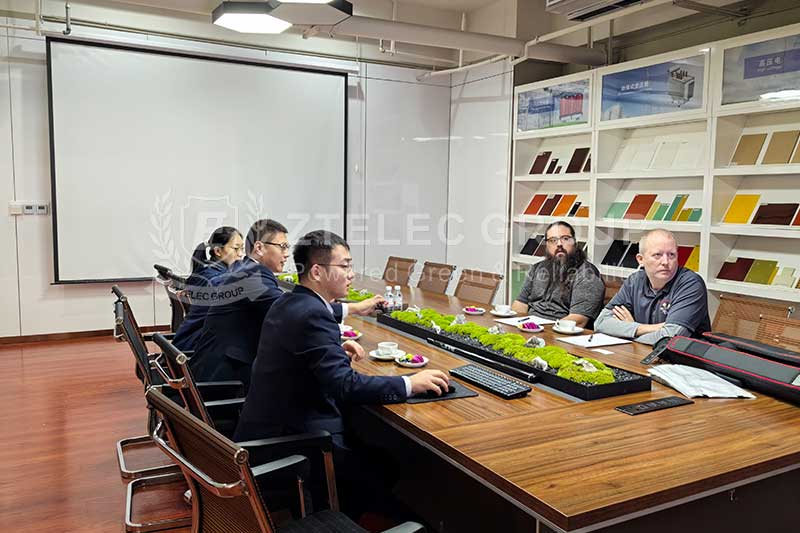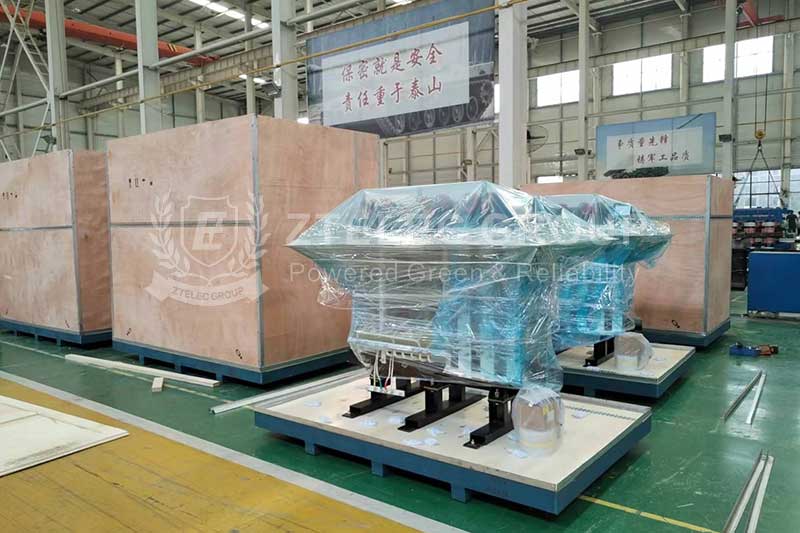Which is better, dry-type transformer or oil-immersed transformer, and what are the differences?
2024-01-03 17:48 | By: ZTELEC-www.ztelecgroup.com | 68click
Are you faced with the dilemma of choosing between dry-type transformers and oil-immersed transformers?
Transformers are the silent heroes of power transmission, helping to transmit power efficiently over long distances. They possess the ability to change voltage levels, allowing electricity to travel great distances. Their choice depends on safety considerations, environmental considerations, installation location and long-term operating costs. Additionally, the voltage and capacity a transformer can withstand, the cooling mechanism it employs, and even the materials used in its manufacturing process are all key factors that distinguish the two types.
1.Dry type transformer
Dry-type transformer: environmentally friendly power source
Dry-type transformers are synonymous with environmental protection. They are stationary devices with insulation systems that are more earth-friendly. These transformers rely on air for cooling, making them energy efficient and environmentally friendly. This cooling process eliminates the need for potentially harmful oil-based cooling systems.
Applications: Dry-type transformers are suitable for use in a variety of environments, including commercial, industrial and utility environments. They are commonly used in small and medium-sized applications in a variety of electrical equipment.
Dry-type transformer types: Various types are available to meet different needs in the field of dry-type transformers. From vacuum pressure impregnation (VPI) to open-wound transformers, each variant offers unique advantages.
Advantages of dry-type transformers
Safe High Voltage Handling: Dry type transformers safely manage high voltage levels without the need for transformer oil.
Overload resistance: The transformer will not be overloaded and protected from overheating, ensuring continuous operation.
Low maintenance cost: No need for transformer oil, which simplifies maintenance work and reduces costs and workload.
Clean operation: No transformer oil means no risk of oil leaks or spills, helping create a cleaner environment.
Flexible installation: they can be installed in a variety of environments and meet high and low voltage requirements.
Reliable Voltage Rating: These transformers always maintain their rated voltage.
Resin insulation: Use resin insulation to improve safety and reliability.
Minimal risk of overheating: Effective insulation and design prevent overheating issues, ensuring optimal performance.
High Efficiency Power Transformers: They transmit power efficiently and maintain high reliability in different applications.
Disadvantages of dry-type transformers
Power limitation: Not suitable for high voltage/high power oil-immersed transformers.
Higher cost: The initial cost is higher.
Cooling efficiency: The cooling capacity is low, limiting large-capacity use.
Dimensional complexity: Large devices may require complex cooling, impacting the design.
Temperature Sensitivity: May operate at higher temperatures.
Noise production: More noise is produced when running.
Limited overload capacity: poor resilience to short-term overload.
Compatibility Issues: Replacing an oil-filled version with a dry version may require modifications.
Application Limitations: Not suitable for demanding insulation/cooling needs.
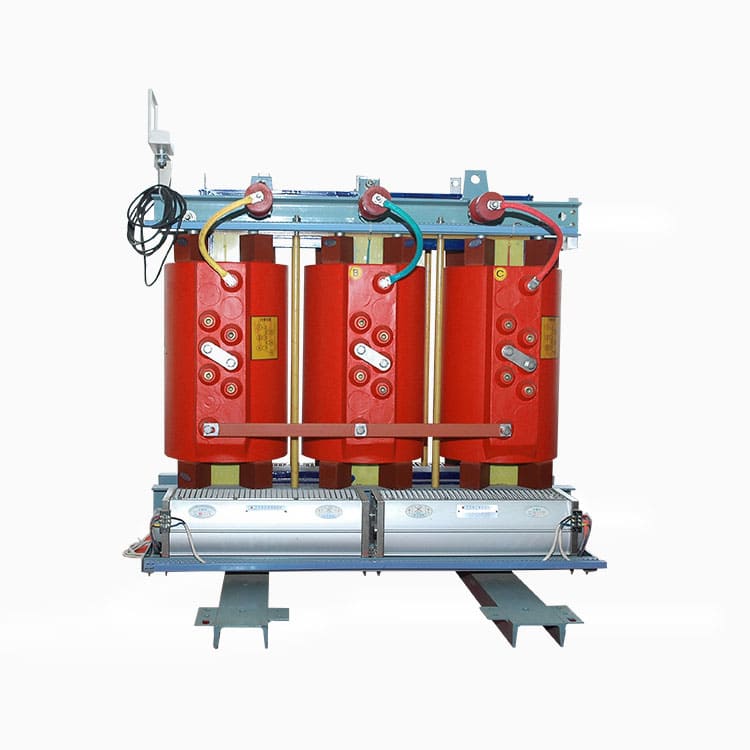
2.Oil-immersed transformer
Oil-immersed transformers: efficient cooling
Oil-immersed transformers are synonymous with efficient cooling. Its construction involves an oil-immersed system that effectively dissipates heat and ensures optimal performance. The heat generated by the coil and core is transferred to the insulating oil and then dispersed into the coolant. This complex cooling process ensures smooth operation even in demanding situations.
Applications: Oil-immersed transformers are widely used in outdoor installations such as transmission and distribution lines, renewable energy generation and large industrial applications.
Oil Transformer Types: There are two main types of oil-immersed transformers: 1-phase transformer and 3-phase transformer. Their versatility allows them to adapt to transformer environments across a wide range of temperatures, from power stations to renewable energy installations.
Advantages of oil-immersed transformers
Long service life: If properly maintained, these transformers have a longer service life.
Stable performance: Resists overheating to ensure stable operation.
Multifunctional application: Due to its high rated voltage, it is suitable for various scenarios.
Proven Reliability: Oil-based power transformers are widely used and reliable.
Smooth operation: performs well under different load conditions.
Enhanced Power Capacity: Ideal for high power applications due to effective insulation.
Low Voltage Compatibility: Works efficiently at low voltage levels.
Disadvantages of oil-immersed transformers
Maintenance requirements: Regular maintenance of transformer oil is necessary.
Environmental issues: Risks of oil spills affecting the environment.
Complex designs: High power and high voltage setups bring complexity.
Costly: Initial and ongoing costs related to maintenance and oil.
Compatibility limitations: Due to its specific functionality, it is not suitable for all applications.
Heat generation: Oil-immersed transformers generate excess heat during operation.
Safety Risk: Risk of fire and leakage due to oil.
Resin Fragility: Resin-encapsulated components may degrade over time.
Oil sampling needs: Regular sampling is required to monitor oil quality.
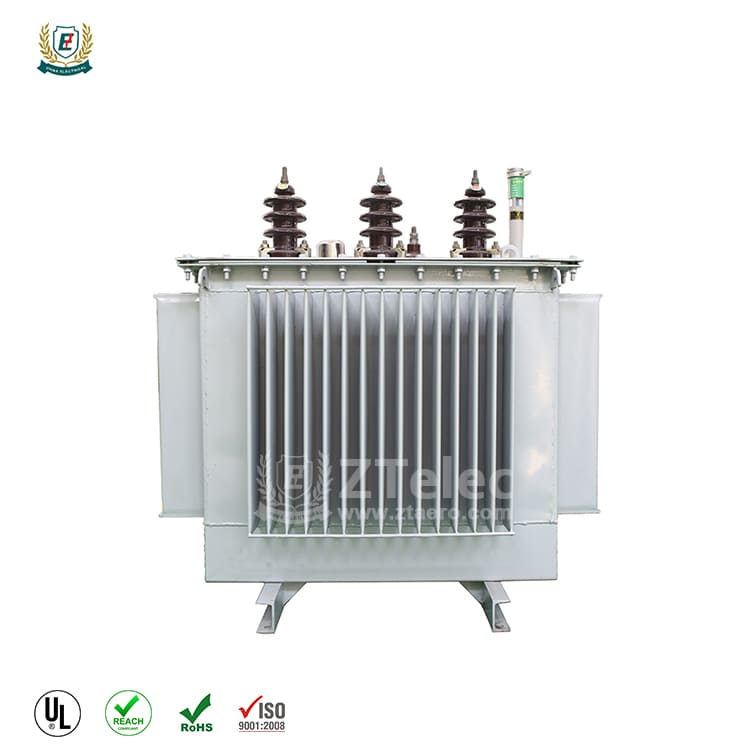
3.Dry Type Transformers vs. Oil Type Transformers: Comparing the Differences
In the field of electrical equipment, the ongoing debate between two types of transformers, dry-type transformers and oil-immersed transformers, has led to a search for a better choice.
Cooling medium: air and oil
Dry-type transformers: Dry-type transformers rely on air for cooling, making them highly efficient in heat dissipation. Air is easily available and is a cost-effective cooling solution. However, this efficiency is limited, and the voltage capacity of dry-type transformers is limited to around 35kV due to cooling constraints.
Oil-immersed transformers: The excellent heat transfer capabilities of oil make it a favored cooling medium for oil-immersed transformers. When the transformer's internal components heat up during operation, the heat is transferred to the insulating oil, where it is effectively dissipated. This enables oil-immersed transformers to handle higher voltage levels and provide superior performance in demanding environments.
Maintenance: regular maintenance vs. infrequent attention
Dry Type Transformers: One of the advantages of dry type transformers is their resilience and reduced need for regular maintenance. These transformers are inherently less prone to problems caused by oil degradation, such as chemical contamination. As a result, dry-type transformers typically require fewer maintenance inspections, saving time and resources.
Oil-filled transformers: On the contrary, oil-filled transformers require more attention. Oils used for cooling and insulation require regular monitoring to ensure their quality and effectiveness. Regular testing for chemical contamination and regular oil filtration are critical to maintaining optimal performance and extending the life of your transformer.
Operating Costs: Energy Efficiency vs. OpEx
Dry-type transformers: Although dry-type transformers generally have a lower initial cost and require less maintenance, their energy efficiency may not be the same as oil-filled transformers. The air cooling mechanism, while efficient, may result in slightly higher energy consumption in the long run.
Oil-immersed transformers: Oil-immersed transformers may incur a higher initial cost due to the involvement of oil and the associated safety measures required for outdoor installations. However, these costs are often offset by the energy efficiency of the transformer. The efficient cooling provided by the oil facilitates better heat dissipation, reducing energy loss and operating expenses over time.
Environmental Impact: Comparing Footprints
Dry-type transformers: Dry-type transformers stand out for their environmentally friendly properties. No oil eliminates the risk of oil leaks and spills, reducing potential environmental harm. This makes them the first choice for interior installations and environments where ecological impact is a concern.
Oil-immersed transformers: While oil-immersed transformers offer superior performance, their reliance on oil presents potential environmental hazards. The risk of oil leakage and the need for oil-proof measures make them more suitable for outdoor installation, where ecological protection measures can be implemented more effectively.
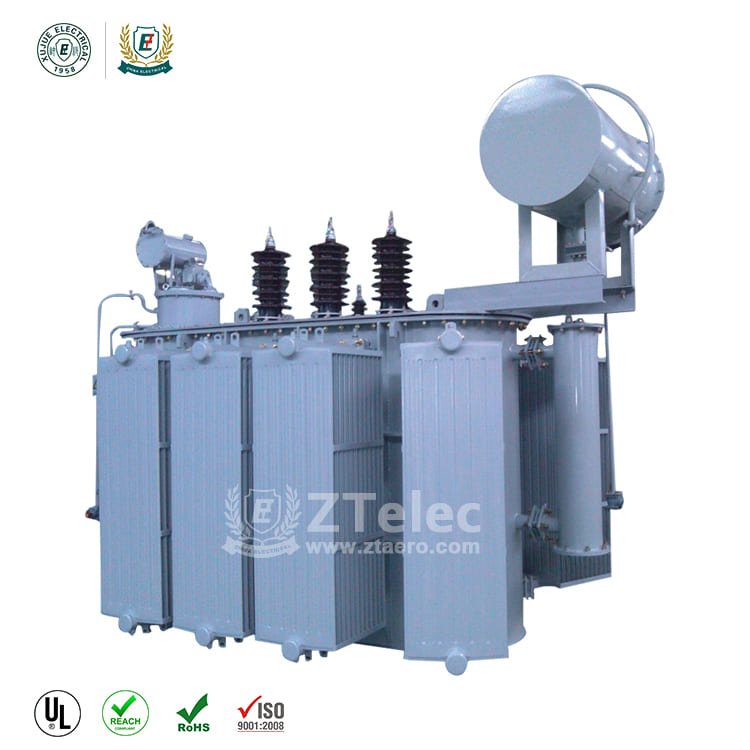
The role of recycling in transformer manufacturing
Recycling is essential for the sustainable production of transformers, especially oil-immersed and immersed transformers. These liquid transformers are typically designed to handle maximum voltage loads and require oil for optimal insulation and cooling. Recycling materials such as copper and steel makes the manufacturing process more environmentally friendly.
Reusing components from decommissioned transformers, such as those that no longer require oil, can significantly reduce waste and save resources. Employing recycling practices aligns with eco-conscious principles and ensures the transformer industry continues to meet the needs of an environmentally responsible and energy-efficient future.
Make an informed decision: choose the right type of transformer
When designing a power system, it is critical to make informed decisions regarding transformer selection. By evaluating your energy needs, weighing environmental impacts, and balancing safety and efficiency, you can lay the foundation for an option that meets your unique needs.
tags:Price of a 1600kVA 10kV Cast Resin Dry-Type Transformer35kV dry-type transformer protection10kV oil-immersed transformer110 kV oil-immersed transformerOil-Immersed Transformer Maintenance
- more+releated article
- 2025-12-13How to Select and Use Phenolic Cloth-base Lami
- 2025-12-13How Much Does Bakelite Sheet Cost? 2025 Price
- 2025-12-13Why are most 3240 epoxy boards yellow?
- 2025-12-13What are the Main Applications of FR4 Epoxy Bo
- 2025-12-13Why Does the Price of Insulating Paperboard Va
- 2025-12-13Heat-Resistant DDP Insulation Paper
- 2025-12-13Comparison of Heat-Resistant DDP Insulating Pa
- 2025-12-13G10 and FR4 Epoxy Boards: Commonly Used for Ge
- 2025-12-13The Price of Heat-Resistant DDP Insulation Pap
- 2025-12-13How to Choose Epoxy Laminate Materials for Gen

